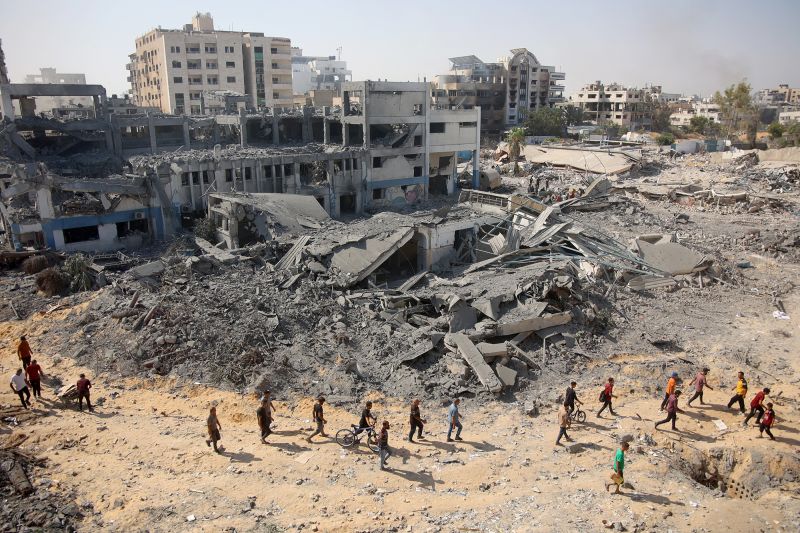As dawn broke over northern Gaza after a terrifying night, the evidence of the Israeli military’s abrupt retreat was plainly visible. Buildings were razed to the ground, smoke hung in the air from smoldering rubble, and the normally bustling streets were eerily quiet, filled only with the cries of despair and loss. Dozens of Palestinian civilians lay lifeless, victims of the sudden, fierce military withdrawal.
The Israeli Defense Forces (IDF), well-known for their advanced weaponry and meticulous planning, had decided to move back from the confrontational border, which they had held for a considerable time. The reasons remain unclear, but the immediate aftermath has been a wave of tragedy and devastation for the populace of northern Gaza.
The neighborhoods that once resonated with the sounds of life now painted a grim picture. Homes, shops, and places of worship, all succumbed to the overwhelming force of the retreat. Stories from survivors explain the sound of explosions, tremors ripping through homes, and a sense of helplessness unlike any before.
Witnesses described scenes of utter chaos and devastation as the IDF machinery retreated – tanks, bulldozers and armored personnel carriers (APCs). The earth-shattering noise echoed through the night, marking an unforgettable memory for those who lived through it. The evidence of their path of destruction was visible once the dust had settled, showing a struggle far beyond the realm of military confrontation.
Reports indicated, with a surfeit of evidence, that the maneuver was not a precision operation, but a ruthless sweep, leaving nothing but devastation in its wake. The images coming from northern Gaza were reminiscent of a city stripped of its vitality – no sign of the bustling local markets, the lively streets, or the colorful Palestinian culture.
This incident also left a heavy toll of civilian casualties. Dozens of Palestinians, including women and children, were caught in the violent fallout of the retreat. Hospitals, already overwhelmed due to the long-standing conflict, found themselves dealing with an influx of victims.
The wanton destruction was not just physical but also psychological. The surviving inhabitants of northern Gaza were left with the trauma of the sudden violence, the loss of loved ones, and the daunting task of rebuilding their lives from the ruins.
Humanitarian groups worldwide were quick to condemn the act. The UN, as well as other leading global organizations, voiced concerns about potential violations of international law and called for a rigorous investigation into the incident. The international community urged for an immediate ceasefire and initiation of dialogue between the stakeholders.
While the Israeli military’s withdrawal was initially seen as an opening for peace negotiations, the ensuing disaster has further complicated an already volatile political and humanitarian situation. The conflict has left a deep scar on northern Gaza, and it will take collective and comprehensive efforts to restore peace and facilitate healing.
Indeed, this incident serves as a reminder of the pressing necessity for a lasting peace agreement between Israel and Palestine. It is a testament to the immense human cost of conflict, echoing the urgent call for diplomacy, dialogue, and reconciliation. The fragile situation requires the full attention of world leaders and peacekeeping forces, showcasing the urgency of addressing the Israeli-Palestinian conflict in a humane, just, and sustainable manner.




